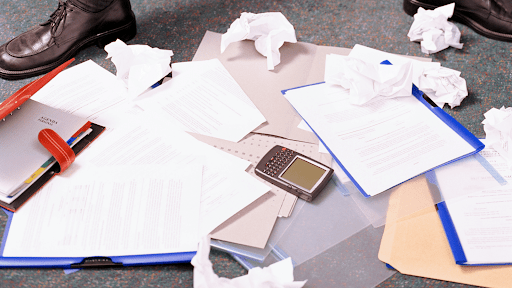7 Steps For An Effective Purchase Requisition Process
Purchase Requisition 101
Purchasing as an activity may sound as easy as buying your weekly groceries. However, consider all the mistakes that we have made when shopping; you find yourself buying things you don’t need in the heat of the moment or suddenly leaving the store with your wallet feeling ten times lighter.
Purchasing on a bigger scale is no different. Businesses often find themselves with an excess of stock that brings more harm than good.
This is where the need for a Purchase Requisition comes in but before we delve deeper into Purchase Requisitions, let’s clarify what it is.
Purchase requisition (PR) at its core is an internal document that outlines the requested goods and services of a business. As such this document requires approval from relevant parties which starts off the purchase requisition process and ends with the procurement team sending out the purchase order (PO) to the vendor.
Curious to know what a Purchase Order is? Click here for the 7 things you need to know about purchase order!
Purchase Requisition: Is it really necessary?
The answer to this question lies at the hands of the business.
Smaller companies can manage without a Purchase Requisition but for bigger companies with hundreds of employees, it is best to have a purchase requisition to keep track of where the request is coming from without having to play detective.
The 7 Steps of Purchase Requisition
The workflow can be as short or as long as your business desires. However, no one wants a long and dragged out process that would take weeks just to get a “yes!” from the procurement team.
Hence, the purchase requisition process is a flexible one and it can be customised to fit your business. Despite the additional step to require approval, the benefits of having it will greatly outweigh the negatives.
- The purchase requisition workflow begins when the business needs to make a purchase. This purchase need can be anything from office supplies to pantry items that are filled in the purchase requisition form.
- Once the requisition form is filled, it will go through an internal system of approvals where it is reviewed and approved by the head of the department.
- Upon approval, the purchase requisition will then be reviewed by the purchasing department and the finance department who can choose to either reject or approve the purchase based on its necessities.
- From the approved purchase requisition, the purchasing department will acquire quotations from different vendors. These quotations will make it easier to compare different prices, reliability and lead time.
- The purchasing department will win a quotation and issue a Purchase Order that will be sent to the vendor as a legally binding contract between the buyer and the vendor.
- The items will then be delivered and checked whether it is of the right quantity and quality. Any returns (if any) are also processed in this step.
- Finally, to ensure its accuracy, a three-way matching is done between the purchase requisition, the purchase order and the invoice given.

The trouble with the Purchase Requisition Process
As listed, the PR process requires an abundance of paperwork being passed from one person to another that could very well get misplaced or damaged causing even more delay in the PR flow.
However, there is a way out of this predicament…
Meet ADAM, a one-stop e-procurement solution provider that helps automate your purchase requisition process from start to finish.
Automation is the perfect solution to all your PR flow needs as it will reduce human error, gives you better spend transparency and increases productivity!
With so many benefits of automation at hand, it seems too good to not give it a try! Click here to learn more about ADAM and how it can help manage your PR flow.
FAQ
- What is a Purchase Requisition?
- Purchase Requisition (PR) is a document that lists the requested goods and services of a business.
- Purchase Requisition (PR) is a document that lists the requested goods and services of a business.
- What is a Purchase Order?
- Purchase Order (PO) is a document given to the seller that outlines the products or services the business wishes to purchase. It is a legally binding contract to confirm that the order is being placed.
- Purchase Order (PO) is a document given to the seller that outlines the products or services the business wishes to purchase. It is a legally binding contract to confirm that the order is being placed.
- What are the 7 Steps of Purchase Requisition?
- Fill in Purchase Requisition form (PR)
- Purchase Requisition approved by internal department
- Purchase Requisition approved by purchasing department
- Receive Quotation
- Create Purchase Order (PO)
- Items delivered
- 3-way match of Purchase Requisition, Purchase Order and Invoice
- Are Purchase Requisitions necessary?
- The need for a Purchase Requisition depends on the company size. Generally smaller companies do not require it but larger companies need it to keep track of the requestor.
- The need for a Purchase Requisition depends on the company size. Generally smaller companies do not require it but larger companies need it to keep track of the requestor.
- What is an automated Purchase Requisition?
- An e-Procurement system that helps manage the Purchase Requisition process by eliminating the use of paper and conducting the Purchase Requisition process online.